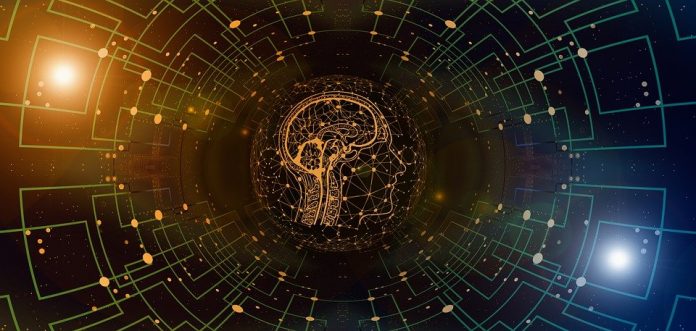The brain is a complex machine that controls every aspect of our lives. How does our brain function? What makes us human? How did we evolve from animals? These questions are often asked by curious minds.
The human brain has evolved over millions of years. Our brains have changed dramatically since our ancestors roamed the earth. This evolution has allowed humans to become smarter and better at solving problems.
Our brains are complex machines that control every aspect of our lives. They are responsible for processing information, controlling emotions, and regulating behavior. We will explore several interesting facts about the human brain, such as how it is composed of billions of neurons, where we get our consciousness from, and why can’t cats think deep thoughts.
Human Brain
What does the human brain look like? How big is it? And how much does it weigh? The human brain is the most complex organ in our body. It weighs between 1.3kg (2.8 lbs) and 1.5kg (3.3 lbs), depending on the person. It has 100 billion neurons and roughly 86 trillion synapses.
It takes approximately 20 years for the average adult brain to develop fully. This means that the brain continues to change throughout life. In fact, new connections form every day.
This part of the brain controls our senses – especially sight, hearing, smell, taste, balance, movement, and touch. Motor skills also depend on this region. We use parts of the frontal lobes to plan ahead, remember things, solve problems, understand abstract concepts, reason, make decisions, recognize people, and recall past experiences.
We use the parietal lobe to interpret data. The occipital lobe allows us to see detailed images, read text, drive a car, or write poetry. The temporal lobe tells us what someone is saying, recognizes voices, remembers faces, and understands the language. The cerebellum coordinates all motor movements. Without these functions, we would be unable to walk, talk, climb stairs, ride a bike, play sports, work with tools, or even type out this sentence!
One thing scientists have discovered is that while the left side of the brain controls the right side of the body, the right side of the brain controls both sides of the body.
Evolution of the Brain
How did the brain of fish evolve into the brain of a mammal?
In the beginning, there were no brains. At some point, single-celled organisms developed the ability to move around and feed themselves. As they began moving more quickly, their bodies needed to keep up with them. To do so, they had to control each muscle individually. This became too difficult to coordinate, so they invented nerves.
Nerves allow us to communicate with one another without having to physically touch one another. Instead of sending signals through the air, we send messages along nerve pathways. When we want to move something, we first tell the brain which muscles to contract. Then we give the signal to those muscles by firing the appropriate nerves.
As animals evolved, they needed to pay attention to other things besides feeding and avoiding danger. So they started using their nervous systems to feel pleasure and pain, to sense when food was available, and to learn.
As time went on, many different types of cells joined together to create an integrated system. Nerve cells connect to brain cells, and brain cells connect to muscle cells. These cells become specialized to perform certain tasks and work together to produce coordinated responses.
The evolution of the brain continued as animals moved from water to land. They needed to breathe air instead of water, and they needed to eat plants and meat instead of just eating small amounts of algae. Their brains grew larger to accommodate these changes.
How does the brain work?
The brain consists of billions of neurons (nerve cells) connected in networks. Neurons are like wires connecting your computer’s circuits. Some neurons carry electrical impulses from one area of the brain to another. Other neurons carry information about sights, sounds, smells, tastes, feelings, thoughts, memories, and emotions.
Neurons receive information from sensory organs such as eyes, ears, nose, tongue, skin, and muscles. Sensory information travels to the brain via the spinal cord and then branches off into various areas of the brain. For example, information coming from the eye goes to the visual cortex, where it can be interpreted. Information coming from the ear goes to the auditory cortex, where it can also be interpreted.
When you think about something, the part of the brain that interprets the thought sends a message down its own special pathway to the motor cortex. From here, the message travels to the muscles involved in thinking or speaking. The message tells the muscles to contract or relax.
What is consciousness?
Consciousness is awareness of our surroundings. It’s what makes us aware of ourselves and others. We experience sensations, thoughts, emotions, memories, and ideas. But how does this happen?
Consciousness comes from activity in the brain. There are two main ways:
Through sensory input. Our senses provide information about the world around us. We see objects, hear sounds, smell odors, taste foods, and feel textures. This information enters the brain through the thalamus, the hypothalamus, and the cerebral cortex.
Through memory. Memories help us understand past experiences. They influence our present actions. As we remember events, we make connections between them. This process happens in the hippocampus.
How do brains communicate with each other?
Nervous systems use chemicals called neurotransmitters to transmit messages from one neuron to another. Neurotransmitters travel along nerve fibers (axons). When a signal reaches its destination, it causes nearby nerves to release more neurotransmitters. The result is a chain reaction.
Where are the parts of the brain located?
There are three major parts of the brain:
- Cerebrum: The cerebrum controls most functions of the body. It includes the frontal lobe, which helps control speech; the parietal lobe, which helps with balance and movement; and the occipital lobe, which processes vision.
- Thalamus: The thalamus relays signals from the spinal cord to the rest of the brain. It receives information about the outside world and transmits it to other parts of the brain.
- Hypothalamus: The hypothalamus regulates many bodily functions, including sleep/wake cycles, hunger, thirst, temperature, blood pressure, heart rate, sexual arousal, and stress response.
What Does the Brain Look Like?
The human brain has 100 billion neurons. These neurons are arranged in layers. Layers 1 and 2 contain large numbers of small neurons. Layer 3 contains medium-sized neurons. Layer 4 contains fewer large neurons.

What Happens During Sleep?
During sleep, your body rests and repairs itself. You may dream while sleeping. Dreams occur when your brain waves slow down. Slow brain waves are associated with REM sleep. During REM sleep, your brain waves move rapidly. You can’t be sure if you’re dreaming during this stage.
What Happens After Death?
After death, the brain stops functioning. The body goes into rigor mortis. Rigor mortis occurs after the heart stops beating. Blood flow slows, causing tissues to stiffen. Tissues become hard because they no longer receive oxygen. The skin becomes pale. Muscles lose their ability to contract.
Why Do Some People Have More Intelligence Than Others?
Some people have more intelligence than others. In general, people who do well on IQ tests tend to be smart. However, there are exceptions. For example, some athletes are very intelligent.
What is the Difference Between Male and Female Brains?
Male brains are larger than female brains. Males also have more gray matter than females. Gray matter is the tissue that carries electrical impulses.
What is the Role of Sex Hormones in the Body?
Sex hormones are chemical messengers produced by glands in the endocrine system. They affect how cells function. Testosterone is an important sex hormone for males. Females produce estrogen. Estrogen affects women’s bodies differently than testosterone does men’s.
Read More: 6 Science Brain Teasers to Challenge Your Critical Thinking







